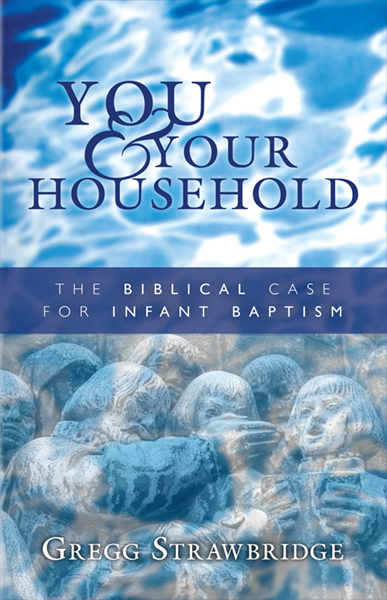In Luke’s two-volumes, The Gospel of Luke and Acts, the Holy Spirit has a prominent place in the life of Jesus and his church. Whenever the Spirit shows up, our minds should race back to the first place we see him in Scripture: brooding in the darkness over the newly created, unformed and unfilled world. He is the Breath of God that carries the Word to tear apart and put everything back together in a new unified, fruitful relationship: light and darkness, waters above and waters below, seas and dry land, vegetation and ground, and man and woman. All of this is done with an eye on creating an environment for God and man to dwell together (Rev 21.3). (more…)
The Authority of the Gospel Story
Stories are powerful. As we read, listen, or watch stories, we become involved. We come to know characters in ways that we know very few people in the world. We hear their inner thoughts and feel their struggles. They become our friends in a way. Their dilemmas become our dilemmas. Our views of justice, love, mercy, and many other things are challenged, not just at the intellectual level, but on an emotional level. The more involved we are in the stories, the more they have the power to shape our lives.
The gospel is a story; a true story, history, but a story nevertheless. God is the great Author crafting the storyline and moving the characters all in place to drive the story to a purposeful conclusion. The Gospels recount this story as it reaches its climax. They record the story of Jesus, the one they proclaim to be the Christ, the Messiah. We read and hear the stories of Jesus’ birth, a few vignettes from his early life, his choosing of the twelve, his frustrations with the twelve, his healings, his hiding, his teaching, his death, and his resurrection. They are all the story of the gospel. (more…)
Why Four Gospels?
Why do we have four Gospels? Wouldn’t it have been a bit more tidy for casual reader and scholar alike if we had one Gospel that would clear up any apparent discrepancies? The Holy Spirit guiding the writers as well as the church obviously didn’t think so. There was a need for four Gospels to give us different perspectives on the life of Christ; all completely consistent with one another so that they can be harmonized historically, but different so as to throw a different light on the Person and work of Christ Jesus.
The early church understood the number four to be Scripturally significant. Irenaeus, second-century bishop of Lyons, summarizes the early church thought about why we have four Gospels: (more…)
Hyphenated Christians
Naming is an important feature of human life and the mission to which God has called man. When we name people or things, we create a way to understand them and deal with them. The unknown—the unnamed—creates tension and anxiety. If someone is prowling through your house in the middle of the night, you want to know “Who’s there?” When you are waiting on test results from the doctor, you want a diagnosis so that you can know how to proceed with any treatment. One of the first steps in understanding a person, situation, or an animal is to name it.
This started in the beginning just after God created man. God brought the animals to him to see what he would name them. God gave the man the responsibility to take dominion over all of the animals, to subdue them for the good of the created order. The first step was naming them. When awakened Adam from his death-sleep after creating the woman, the first thing Adam did was name the woman. He then gave her the name “Eve” after God pronounced all the judgments upon him, her, and the serpent. (more…)
Male and Female?
“Transgender” people have been around for quite some time. Up until recently, we haven’t really had to take them seriously as a culture. They were always on the fringe. In many ways they still are. However, now our culture is not only tolerating them, but they are being praised for their courage of breaking free from “social constructs” of male and female foisted upon them by the interpretation of their anatomy and becoming the sex (or gender) they really feel they are on the inside. The media that feed our society are pushing the rest of us to sympathize and celebrate these new heroes. Gender identity has become so fluid that the binary distinctions of male and female aren’t enough. Facebook has dozens of options and a “Custom” button for the user to choose an identity.
The question that confronts the church is one that many of us haven’t had to ask in the West for quite some time. With our Christian heritage, we have accepted the categories of male and female for centuries. But now we must give an account for why believe these are still valid categories. Some dismiss this out-of-hand as silly, requiring no argument. But as we take the gospel to our culture, this is a question we may have to answer. Does the gospel speak to this issue? Does it really matter if someone believes he’s a female even though he has a male anatomy (or vice versa)? Does this have any bearing on whether or not someone is a Christian? (more…)
A Beautiful Wall
The wall surrounding the New Jerusalem that John sees at the end of the Revelation is described as being great and high (21.12); a wall that is made of translucent stone (whether jasper or diamond; 21.18). This wall serves the purpose of distinguishing this city from other cities whose cultures are characterized by sinful patterns of life (22.15). The culture of Christ’s church is distinct. This distinction is not created by a cold, hard, plain stone wall. The wall that distinguishes us from the rest of the world is made of precious stone and is, therefore, beautiful. This wall, being translucent, allows the glory of God that is inside the city to shine through so that the world outside the city can see the life that exists within the city.
From John’s description of the city throughout, we know that this city is the reality of the church now in Christ and is what we are becoming. It is our present. It is our future. Christ has made his bride beautiful through his death and in his resurrection. The church can come and stand before the Father in beautiful holiness united to Christ. But there is also the reality that Christ is making us into a more beautiful bride through the Spirit’s work throughout history so that we might become what we are. As the church we are to see what we are being made and deliberately have our lives now on that trajectory. (more…)
Being Holy
At the end of Revelation, John is guided by an angel to see the Lamb’s wife, which is a city (Rev 21.9). This city is what a wife should be: pure. She is, John sees, a holy city. Outside of her walls are “dogs and sorcerers and sexually immoral and murderers and idolaters, and whoever loves and practices a lie” (Rev 22.15). They are the unholy. But the walls of the city enclose a culture that has integrity and purity. There is no weakness to compromise its strength. There is no blemish to compromise its purity. The city is holy like the God who created her.
John’s vision of the church is a bringing together of what we are, what we are becoming, and what we will be. Created in the image of God, we were created holy. Re-created in the image of God in Christ, we are holy (cf. Eph 4.21-24). As the bride, the Lamb’s wife, we are united to him, one flesh. His holiness belongs to us. In him we are holy. This is the reason we can dwell in this city in the unveiled presence of God, drawing near to him without fear of being consumed. Christ took our sins in himself, died for them, and rose again so that they might be forgiven and we might share in his holiness. At this present time, we who are in Christ by faith share in his holiness. The church is what John sees: a holy city. (more…)
Discipling the Nations, Starting at Home
After his resurrection, Jesus gave the church the commission to disciple the nations (Mt 28.18-20). In fulfillment of the promise to Abraham, all the nations would be blessed through Abraham’s seed: Christ, head and body. When John sees a vision of the glorious church, the New Jerusalem, he sees kings bringing their glory into the city. The glory of kings is the realms of their dominions. Entire cultures will be brought in and made part of the city of God.
This glorious vision is overwhelming. The task seems daunting. We hear this grand narrative of “the world” and “nations” consciously arranging their cultures under the lordship of Christ, look at the task before us, and say, “How in the world do we get there from here?” We have trouble maintaining personal disciplines, ordering our own family life, and arranging local church life so that the church acts the way she is supposed to act. How are we expected to be changing the broader culture around us? The task, while glorious in its vision, seems hopeless. (more…)
The Church: God’s Glory
The first sanctuary for worship wasn’t much. It was beautiful, but it was simple: a garden filled with pristine, freshly created trees. The man and the woman were themselves also in their simplest state: naked and unashamed. The sanctuary and man were glorious but not as glorious as God intended them to be. In all of his dominion taking, man was to take the materials of the world around him and make the garden a more glorious place, which would eventually include man himself being glorified with clothing. The sanctuary and man within it was to move from this pristine state of glory into the greater glory of a developed world.
We can know that this was God’s intention by looking at the rest of the story of Scripture. As the story progresses, God moves his people from making stone altars (Abraham, Isaac, and Jacob) to building the Tabernacle (Moses) and eventually the Temple (Solomon). Man himself doesn’t return to a state of nakedness, but is clothed with garments of glory and beauty (Exod 28.2). All of these structures include the original garden sanctuary in some form, but they are all more developed. The place where God is meeting with man is becoming more glorious. (more…)
Trees of Life
As we come to the end of the Bible, there are some things that are intriguingly similar to the beginning. In the beginning, God created the man and placed him in a garden that he had planted in the land of Eden, telling him to be fruitful and multiply. This garden had a river that ran through it and split into four different rivers outside of the garden. In the midst of the garden were two trees: the Tree of Life and the Tree of the Knowledge of Good and Evil. Man was invited to come to the Tree of Life but forbidden to partake of the Tree of the Knowledge of Good and Evil. In the midst of the garden, at this Tree, God would communicate his life to man. Man would enjoy communion with God there at this Tree, being nourished in every way to be what his Father had created him to be. (more…)

























